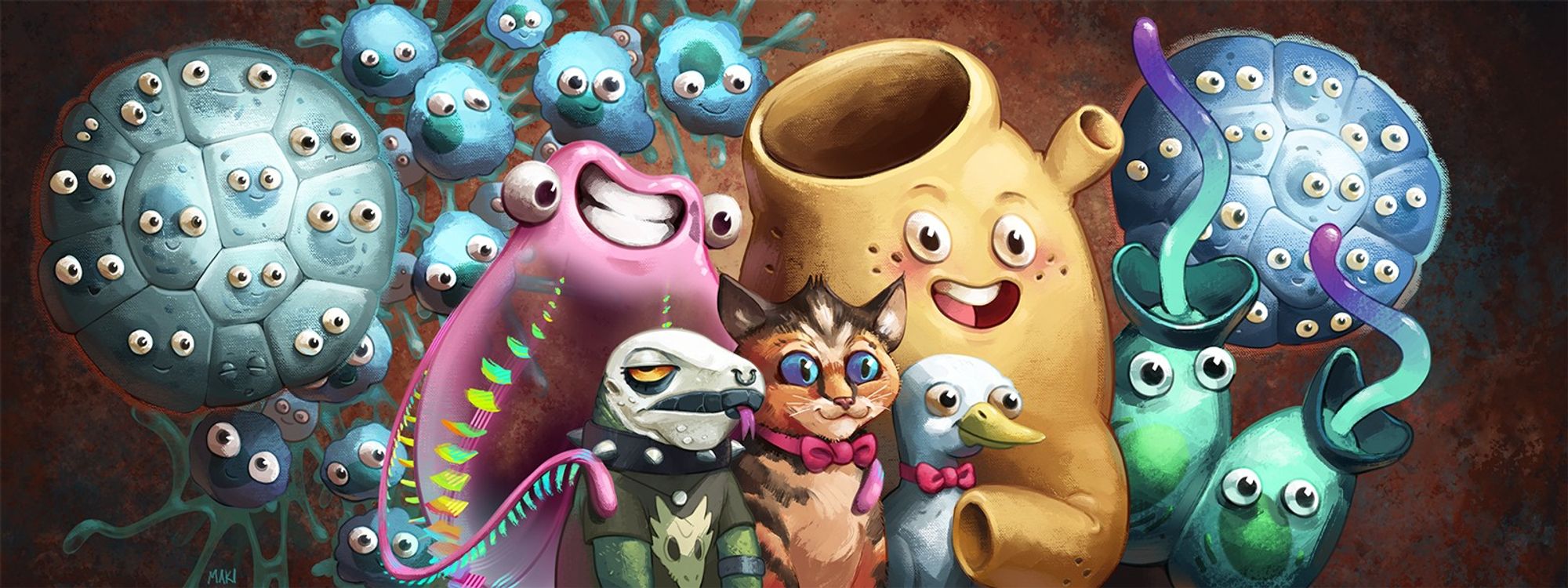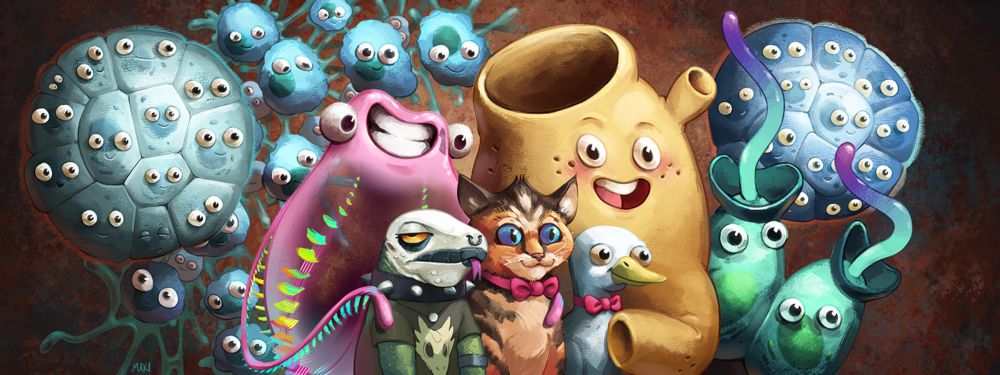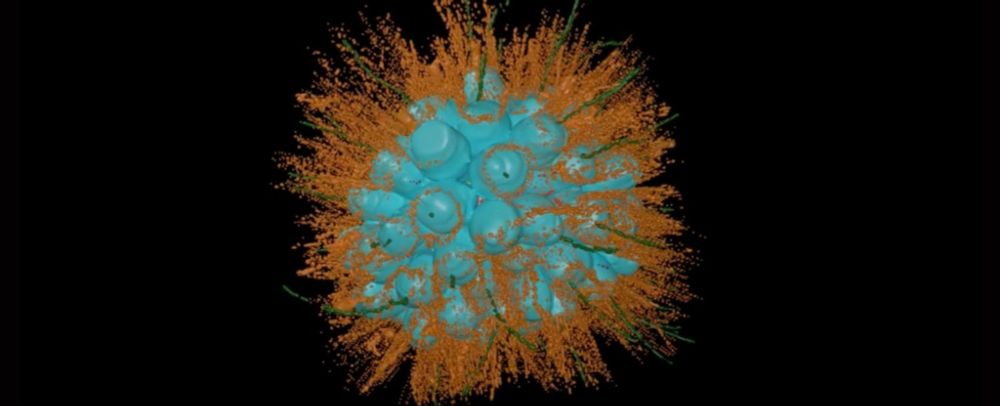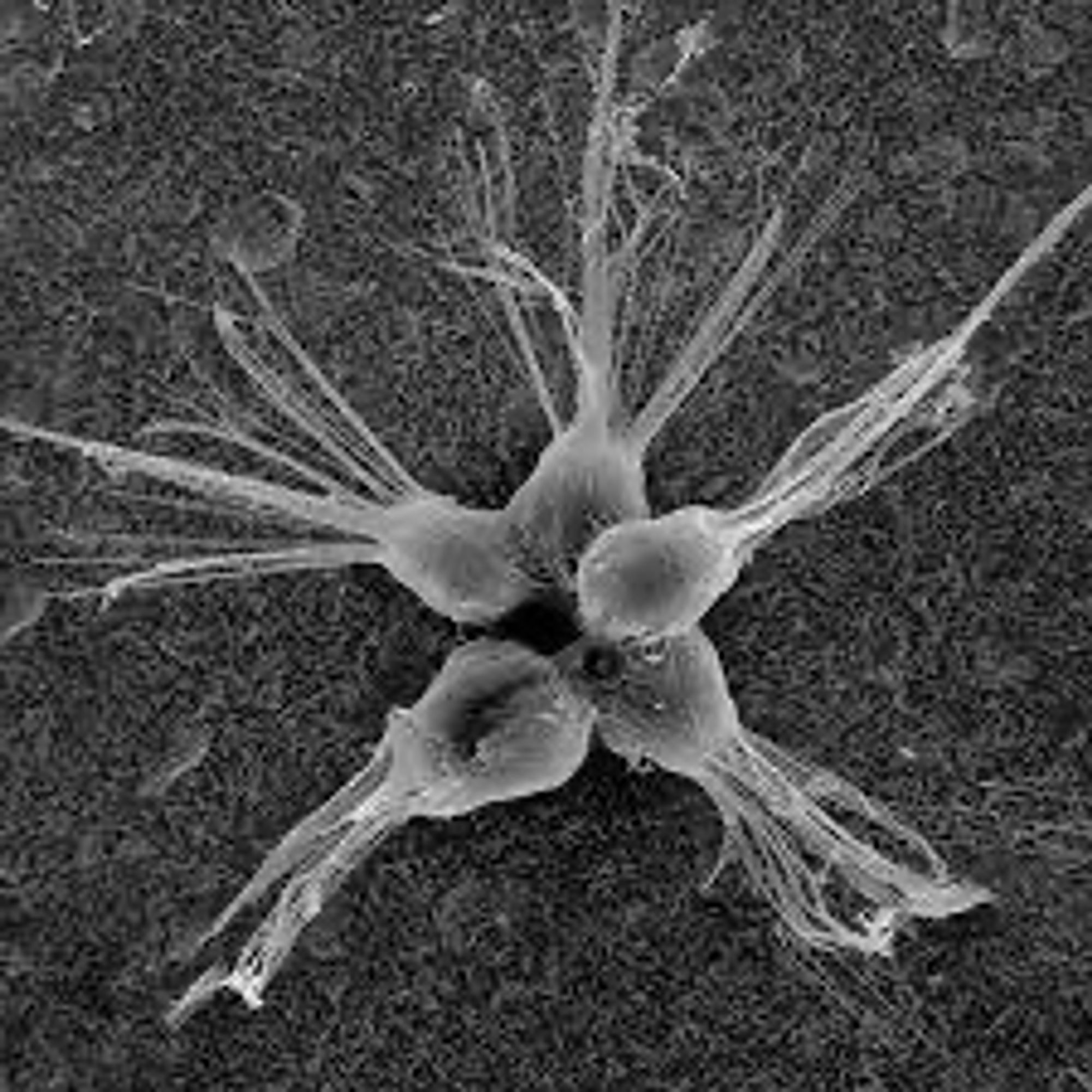Meet the family! From the Knowable image caption: By comparing animals to their distant unicellular cousins, scientists aim to figure out what their shared ancestors might have been like.

This new article by Amber Dance in Knowable Magazine now marks the second time I've drawn some of our oldest multicellular relatives (namely sponges, comb jellies, and choanoflagellates) for them. Special thanks to AD Lisa Modica as always for letting me run wild on this banner image. #sciart

To understand the origins of muticelled life, researchers are studying a motley assortment of simpler animal relatives. The commonalities they’re unearthing offer a trove of clues about our mutual pas...
But how did it evolve? We detected SIRanc homologs in fungi, choanoflagellates, animals... It suggests that the acquisition event occurred prior to their last common ancestor, more than 1.4 billion years ago!!! Is SIRanc the only example of eukaryotic SIRim ?
Rosette is a rosette is a... (1|3) by Christoph — I dare say that every biologist was blown away when they, a decade ago or so, first saw pictures of spherical rosettes that choanoflagellates can and readily do form. Is this emergent multicellularity? Skilled... Read more > tinyurl.com/2rtbmd93

Mono Lake choanoflagellates colonies 🌿

Why is it so weird?
Chromatin profiling identifies putative dual roles for H3K27me3 in regulating transposons and cell type specific genes in choanoflagellates www.biorxiv.org/content/10.1101/2024.05.28.596151v1

Gene expression is tightly controlled during animal development to allow the formation of specialize
Chromatin profiling identifies putative dual roles for H3K27me3 in regulating transposons and cell type specific genes in choanoflagellates www.biorxiv.org/content/10.1101/2024.05.28.596151v1

Gene expression is tightly controlled during animal development to allow the formation of specialize
Could cilia have holdfast functions beyond mollusks? Collagen is pretty ancient (but not as old as cilia). For example, it looks like choanoflagellates have genes encoding collagen-like molecules (e.g., Uniprot A9V9M1 and A9V8A7). What do they do with them? Part of the theca?
